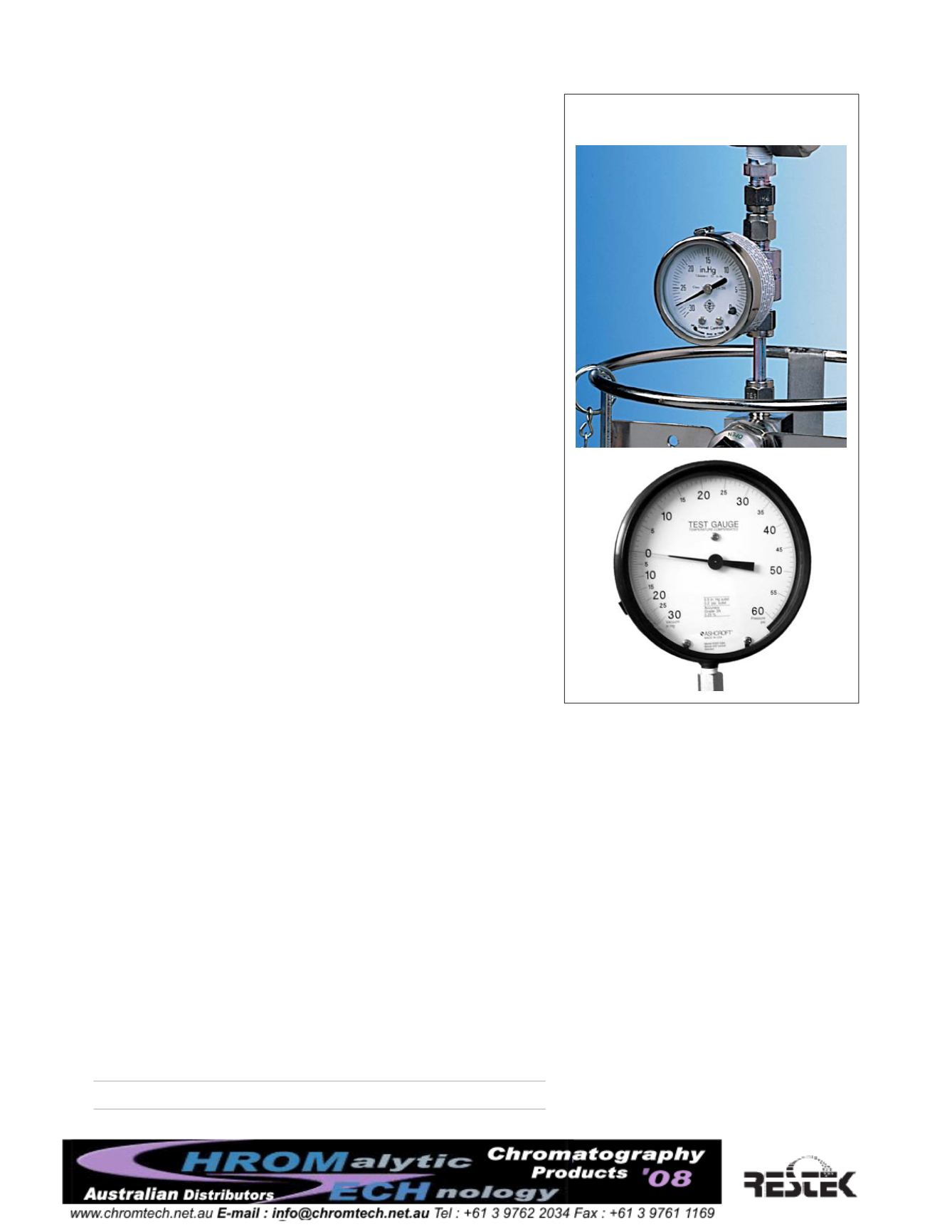
7
Toset thedesired flow rate follow thesesteps:
1. Remove the protective cap from the backof theVeriflo™FlowController
SC423XLbody.
2. Connect either an evacuated canister or a vacuum source to the outlet of
the sampling train.
3. Connect ahighquality calibrated flowmeter (i.e.,mass flowmeter,
rotameter,GC-type flow sensor, e.g.,RestekFlowmeter 6000, cat. #21622)
to the inlet of the train.
4. Apply vacuumbyopening the canister or turningon the vacuum source.
5. With a 3mmhex (Allen)wrench, adjust the piston gap screw to achieve
the desired flow rate (Table 2). Between adjustments allow the flow to
equilibrate for severalminutes.
6. Replace the protective caponto the backof theVeriflo™FlowController
body.
Cleanliness:Certifying theSamplingTrain forUse
US EPA CompendiumMethod TO-14A/TO-15 requires that the sampling
trainbe certified cleanprior touse. Certify the trainby passing a humidified,
high-purity air stream through the train, concentrating the exit gas on a trap,
and analyzing the gas by gas chromatography / mass spectroscopy or other
selectivedetector.For the sampling train topasscertification theanalytical sys-
tem shouldnot detect greater than0.2ppbvof any targetVOC.
The certified sampling train shouldbe carefullypackaged in aluminum foil or
in a clean container for storage or for shipment into the field.Care inpackag-
ing is critical. Careless handling could affect the preset flow rate.When the
sampling train is ready for sampling, prepare the canister.
IV.Preparing theCanister forSampling
Preparing a canister for sampling involves certifying the canister clean, evacu-
ating the canister to final pressure for use, and identifying the canister. All
information acquired during these processes is needed for the chain of cus-
tody.
Certifying the cleanliness of the canister is important toward ensuring that
results reportedare solely from the site sampled,andnot admixedwith residue
from aprevious site or from contaminated laboratory air.To certify a canister
clean, fill the canister with humidified air, pass the air from the canister
through an adsorbent trap and analyze the adsorbent for target VOCs by
GC/MSor other selective detector.TwoUSEPAmethods discuss canister cer-
tification: EPACompendiumTO-12 andEPACompendiumTO-14A/TO-15.
To comply with EPA CompendiumMethods TO-14A/TO-15, the analytical
system shouldnot detect greater than 0.2ppbv of any targetVOC. To comply
withEPACompendiumMethodTO-12 theanalytical system,GC/FID, should
notdetectgreater than0.02ppmvChydrocarbons.Althoughbatchcertification
of canister cleanliness is a relatively commonpractice,we recommend certify-
inganddocumentingeachcanister individually.Detailedcleaning instructions
are presented in SectionVIII.Cleaning theCanister (page 12).
Figure6
Conventional vacuumgauge
andhigh-accuracy test gauge.
Table2
Flow rates for integrated sampling, usinga6-liter canister
and samplingon the flat portionof the flow curve for the flow
controller (Figure5).
Sampling Period
(hours)
0.5
0.75
1
2
4
8
12
16
24
FlowRate Range
(mL/min.) 133-167 89-111 67-83 33-42 17-21 8-10 5.6-6.9 4.2-5.2 2.8-3.5
Collected volume is 4-5 liters (flow= volume inmL / sampling time inmin.).


